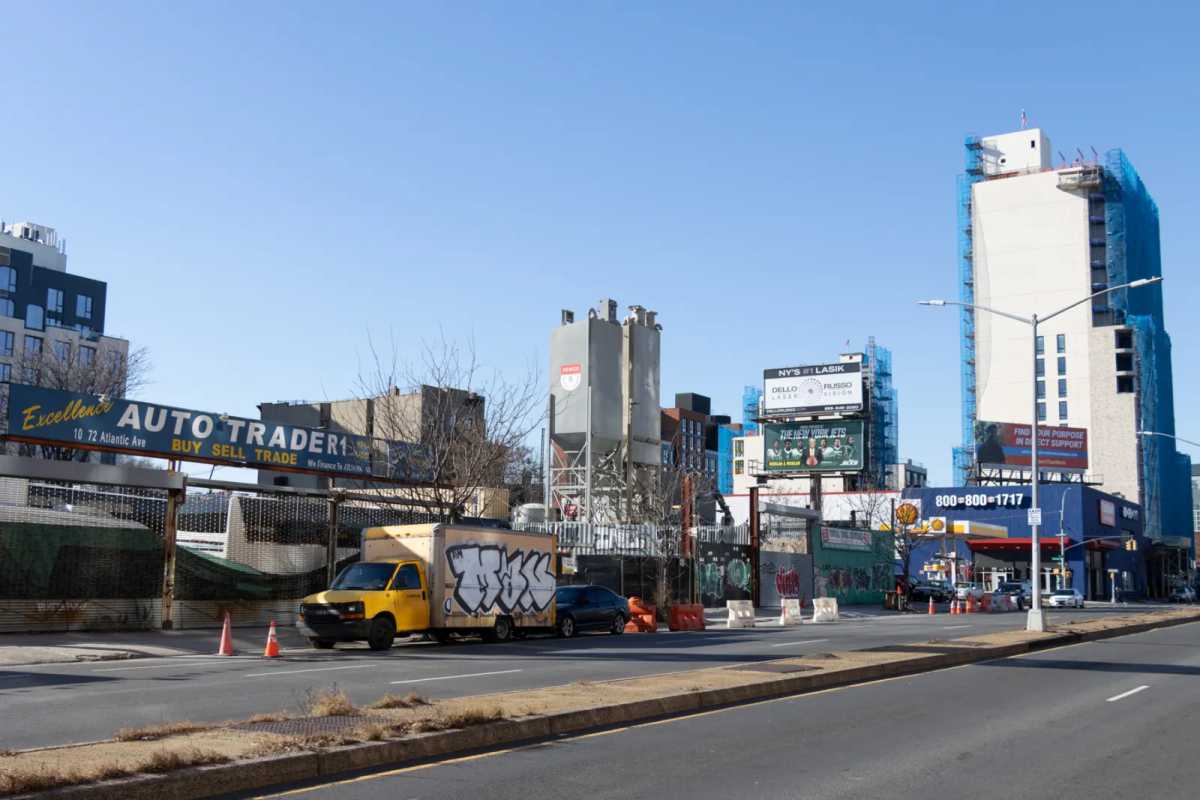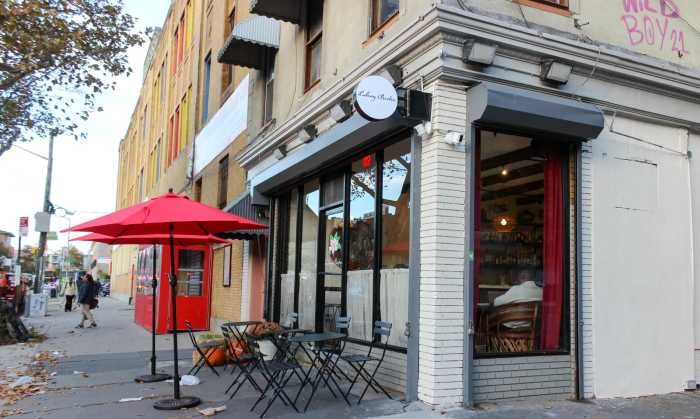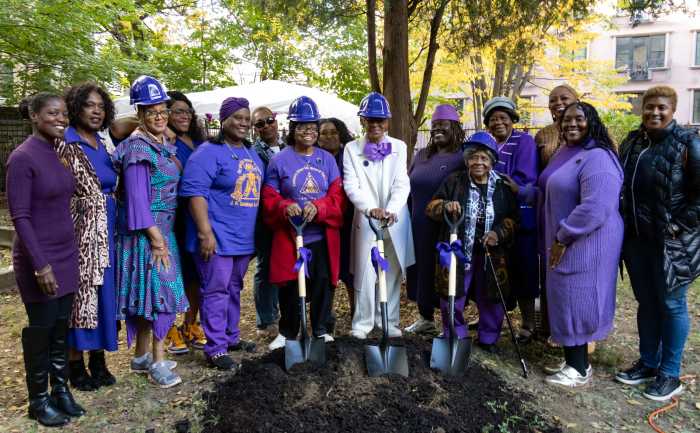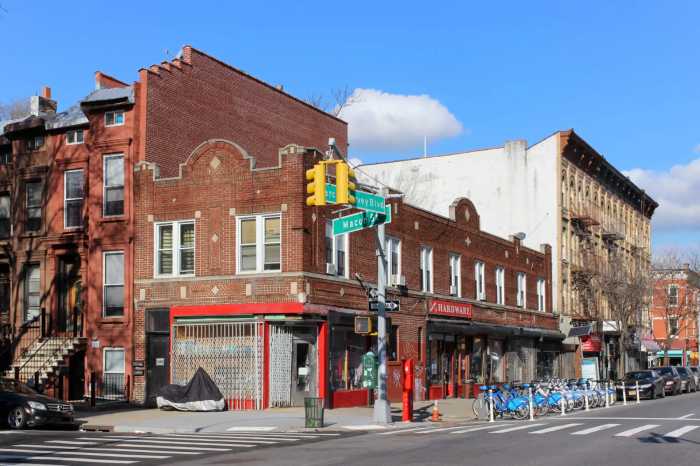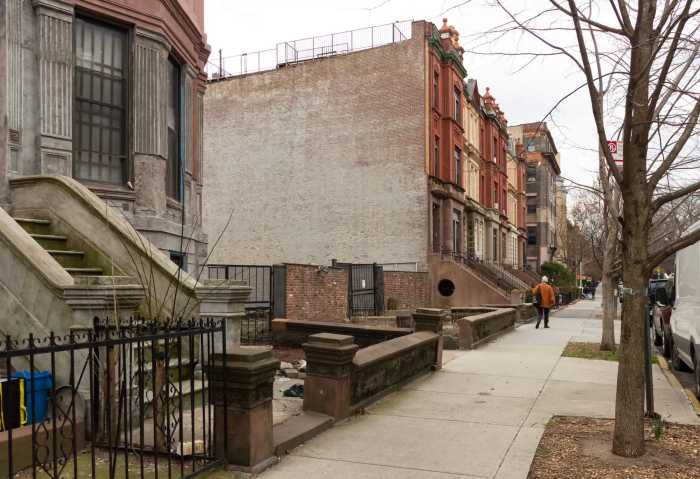A major rezoning plan that will dramatically reshape a swath of central Brooklyn — replacing low-lying industrial buildings with apartment towers containing potentially thousands of new units, including affordable ones — was approved by the City Council on Wednesday.
The Atlantic Avenue Mixed-Use Plan rezones approximately 21 blocks along Atlantic Avenue, stretching from Vanderbilt Avenue in Prospect Heights to Nostrand Avenue at the border of Crown Heights and Bed-Stuy, allowing buildings of up to 185 feet (roughly 18 stories) along certain stretches of the rezoned area.
The plan replaces industrial zoning with new mixed-use districts, paving the way for residential high-rises and expanded retail and commercial space. It also mandates investments for infrastructure upgrades. The rezoning represents a unified plan for the future of the mostly low-lying, industrial stretch of central Brooklyn that has increasingly seen large developments break up the skyline through spot rezonings as property values have climbed, along with demands on housing.
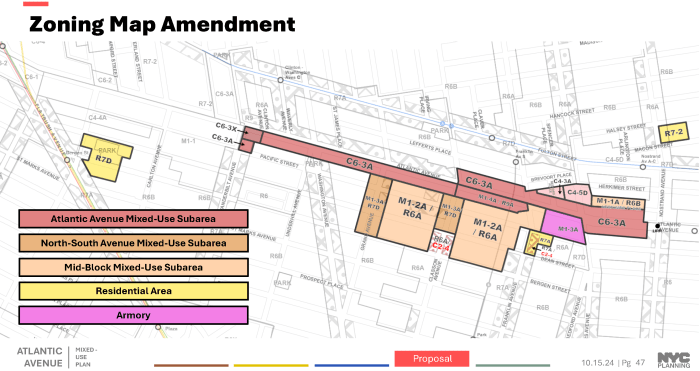
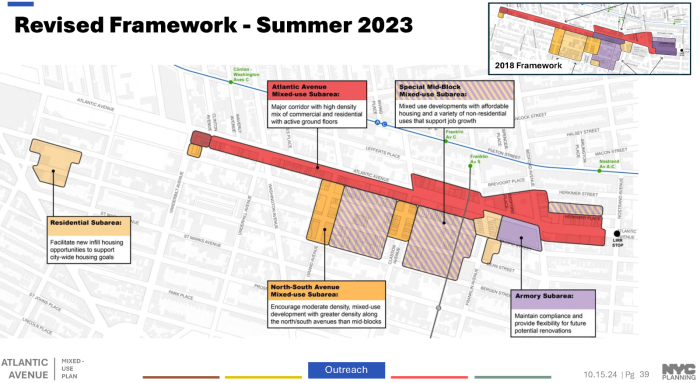
The Department of City Planning estimates the rezoning could create nearly 4,600 new homes. Of those, more than 1,900, or 40 percent, will be permanently “affordable” — e.g. income restricted and rent stabilized.
Nine hundred of those affordable units will be in 100 percent affordable, fully subsidized developments, spread over seven city-owned sites, according to local council members. These fully subsidized units will be targeted at households earning an average of 50 percent of Area Median Income.
At 50 percent of AMI, a single person making $56,700 or a family of three with an income of 72,900 would be eligible. A one-bedroom at that level would rent for about $1,456 per month, while a three-bedroom would be priced at about $2,018. (The Area Median Income will likely increase before any new units are built.)
The other 1,000 affordable units will be created in private, for-profit developments under the city’s Mandatory Inclusionary Housing option one. It requires 25 percent of units be set aside for households earning an average of 60 percent of the Area Median Income. (The figure of 1,000 is a city estimate that adds up to a hair more than 25 percent of the 3,700 total apartments apart from those on city-owned land.)
Currently, 60 percent of AMI is $68,040 for a single person or $87,480 for a family of three. A one-bedroom at that level would rent for about $1,747 per month, while a three-bedroom would go for roughly $2,422.
Council Member Crystal Hudson, who represents much of the rezoning area, including Crown Heights and Prospect Heights, called the plan “the culmination of more than a decade of advocacy from local residents and nearly three years of public engagement, hard work, and tireless negotiations.”
She emphasized that about 40 percent of the new units will be affordable to low- and moderate-income New Yorkers — equivalent to the median per capita income across the entire city of $50,776, according to the census — and said the plan also includes more than $215 million in public investments. These span infrastructure upgrades, park and playground renovation, local hiring initiatives, and tenant and homeowner protections.
“With this community-led rezoning, we’re tackling several major crises facing our city: a housing shortage, dangerous streets, and the urgent need for good-paying jobs accessible to all New Yorkers, regardless of education level,” Hudson said.
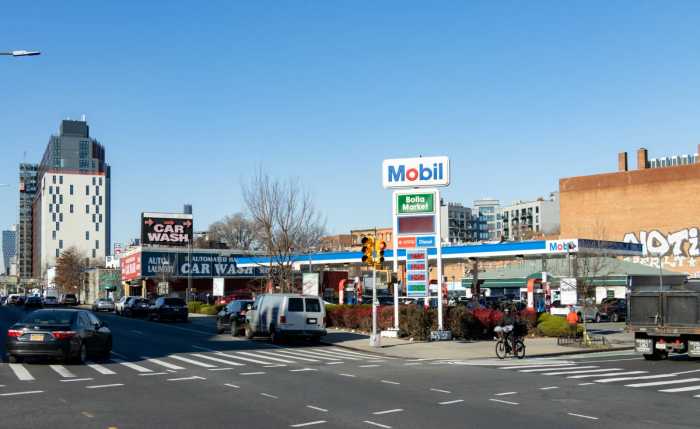
In addition to housing, the plan allows for more than 921,000 square feet of commercial and community space, including offices, retail, light industrial businesses, and services. The non-residential components could generate approximately 2,800 new jobs, according to city documents.
During the rezoning process, community members raised concerns about displacement, affordability, and the loss of industrial space. In earlier stages of review, the borough president and local community boards supported the plan with conditions.
Conditions included that buildings be capped at 12 stories, affordability deepened beyond current city rules, tenants and homeowners protected from displacement, local businesses get support, manufacturing space protected, and infrastructure upgrades completed. While some of the those conditions were addressed in the rezoning that passed, including investments for infrastructure, tenant and homeowner protection, and deeper affordability, others, such as the height restrictions, were not.
The deal added a greater number of affordable units not through developer concessions but thanks to a city commitment to building affordable units on city-owned lots using public subsidies.
Concerns around affordability and the protection of manufacturing space were also raised by City Planning Commissioners when they voted yes on the plan.
Council Member Chi Ossé, who represents the portion of Bed-Stuy affected by the rezoning, said at Wednesday’s council meeting the projected 4,600 units the rezoning could potentially bring goes beyond the total number of homes built in the area over the past decade.
“Through the Atlantic Avenue Mixed-Use Plan, 40 percent of units will be permanently income restricted, and 100 percent will be contributing to New York’s desperately low housing supply, putting downward pressure on rents for everyone,” Ossé said.
He also celebrated the investments in workforce development, street safety, parks, and infrastructure. “We are redesigning the stretch of Atlantic so kids can cross in safety, seniors can stroll without fear, and small businesses can flourish along a calmer, greener corridor,” he said.
“Some will ask, why build so much?” he added. “My answer is simple: Displacement is not a force of nature—it is a policy choice. When we deprive our city of new homes, rents skyrocket and families are pushed out. When we say yes to new homes, to income-restricted homes, to making room for everyone so no one is priced out—we choose community over scarcity and inclusion over exclusion.”
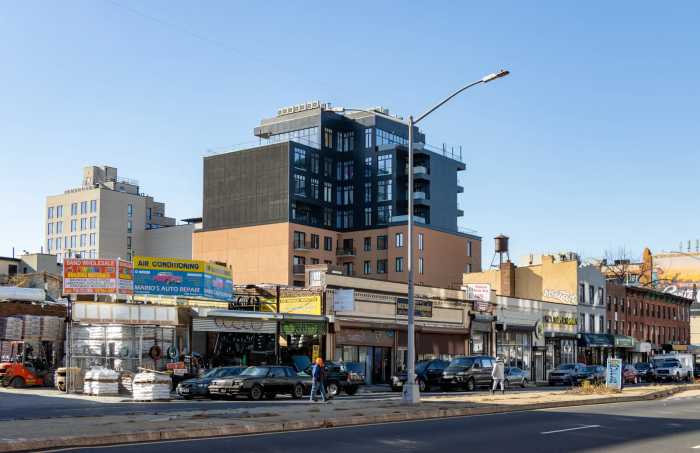
The rezoning includes multiple zoning changes. Industrial M1-1 and M1-2 zones along Atlantic will be replaced with C6-3A districts, permitting higher-density mixed-use development with mandatory affordable housing. Buildings as tall as 185 feet, or approximately 18 stories, including bonuses, would be allowed in some areas, according to city rezoning documents. Developers will be eligible for a 20 percent floor area bonus if they include publicly accessible open space, and incentives will encourage projects that combine residential and commercial uses.
North-south avenues such as Bedford, Grand, and Classon will be rezoned to R7D and R6B, allowing mid-rise mixed-use buildings. Side streets including Dean, Bergen, and Pacific will see R6B zoning with height limits. The Bedford Atlantic Armory site will be rezoned to C4-4L, allowing for future community-oriented development.
The city-owned parcels that will be developed into 100 percent affordable housing include Dean Park Edge and Bergen Green, which will together offer 262 affordable apartments. A former Department of Education site on Nostrand Avenue will be converted into housing with 200 units. Additional sites on Pacific Street and Atlantic Avenue will yield another 286 affordable homes.
The plan also includes pedestrian safety improvements, new open spaces, and better access to public transit. City officials said the plan builds on years of grassroots organizing, including Community Board 8’s earlier work on the M-CROWN proposal, which aimed to preserve jobs and manufacturing in the area.
City Council Speaker Adrienne Adams praised the collaboration between city agencies and locals at the meeting, saying: “The Council’s partnership with the Department of City Planning and community stakeholders, including Brooklyn community boards 3 and 8, represents a model of community planning and collaboration that can advance housing solutions and community investments that benefit all New Yorkers.”
Community Board 8 member and Prospect Heights resident Gib Veconi told Brownstoner he is disappointed the rezoning requires Mandatory Inclusionary Housing option one rather than option three, which would have targeted incomes averaging 40 percent of Area Median Income, or $58,320 for a household of three people.
While the version of the rezoning that passed lacked incentives for light manufacturing — intended to create good jobs for locals without a college degree — the Department of City Planning plans to correct the document and add them, he said.
He hopes the funding for an attorney to help renters facing eviction will be adequate as the “need for these services is very great” to stem displacement, he added.
The plan now heads to Mayor Eric Adams’ desk for final approval.
This story first appeared on Brooklyn Paper’s sister site Brownstoner


